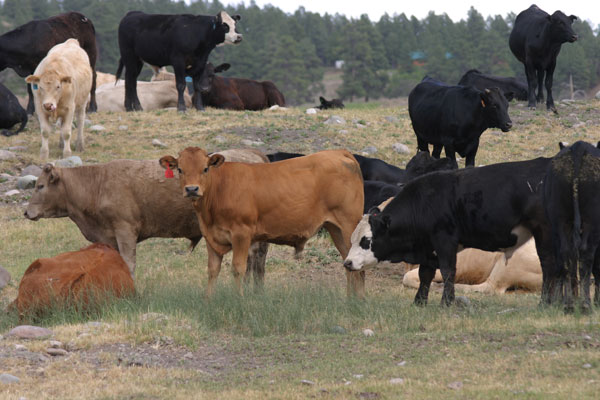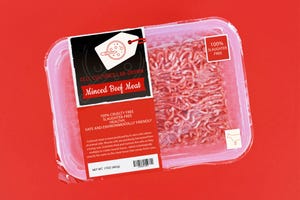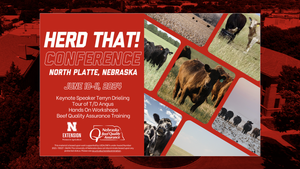Follow the money
Growyard evolution poses opportunity and challenge to the conventional stocker sector.
October 1, 2019

Sponsored Content
Growing cattle on forage continues to be the most economic way to add pounds, most of the time. But, feedlot labor constraints and consumers' expanding appetite for higher quality beef are making growyards more integral to the supply chain.
"As feedyards have gotten bigger, not only in capacity by unit, but in terms of multiple locations, they don't have the ability to manage stressed or high-risk cattle like they could years ago," explains Don Close, senior analyst of animal protein for Rabo AgriFinance, "A key driver for commercial feeders making more use of growyards is their constraint on labor, certainly skilled labor. The cowboys who know how to handle stressed cattle are becoming a near impossibility to find and to keep."
But, economic efficiency increases when feedlots can procure cattle across a wide range of weights, including light calves.
"Buying lighter-weight cattle greatly expands the time window for both risk management and to do a better job," Close explained at Kansas State University's recent Beef Stocker Field Day.
That's where growyards come into play.
"It allows them to have a central collection point for cattle. It gives them a place to condition the calves to make sure the health is good before introducing them to a broad population of cattle. It enables those calves to grow structurally on a lower-cost ration than in the feedyard," Close says.
Earning carcass premiums
Moreover, growyards can feed higher-energy rations that enable feedlots to sell cattle with increased carcass quality, which return the most money.
Whether the proverbial chicken or egg, formula and grid pricing encourage production of cattle that grade Choice and Prime, especially Prime and the upper two-thirds of Choice. The latter defines much of the premium branded beef market.
Consistent carcass premiums of $4-$8 per cwt—the spread between branded cutout values and the comprehensive cutout—is forcing commercial cattle feeders to strive for increased carcass quality, Close says.
"The discounts you have on non-performing or commodity cattle, that spread is going to be the driver of the price spreads in feeder cattle quality that we've talked about for 20 years. It's going to force commercial feeders to buy more reputation cattle. It's going to force them to buy more source-verified cattle."
Conversely, he believes this reality will drive widening discounts of commodity, put-together cattle.
"Think about the cattle you're sourcing. Think about their origin," Close says.
Week in and week out, about 75-80% of fed cattle grade Choice or Prime. As recently as 15 years ago, the mix was about 50-50. As carcass quality increased, Close says consumer demand also increased for a quality beef eating experience every time.
"Improvement in quality is what has enabled the industry to see the resurgence of beef demand, and we can't back away from that," he says.
Quality is driving tighter supply relationships
Accommodating increased consumer demand for beef that fits narrower carcass and management specifications also means packers must have a pre-determined supply of specification-ready cattle coming to them each week. In turn, the feedlots sending the cattle must have them in the supply line and ready to go on feed.
Close understands the necessity and value of pasture grazing, but explains having cattle on a higher energy ration for a longer period of time enables cattle to grade or to grade better, increases daily gains and better defines out dates, which eases pressure on procurement teams.
"Keep in mind, a lot of these large commercial entities have to buy 15,000-30,000 feeder cattle per week. It takes pressure off of the buying staff if they know they have a percentage of their inventory on hand," Close says.
"It also provides the opportunity to sort out the non-performing cattle earlier. It gives us a higher level of assurance of cattle performance once they reach the feedyard. It better enables the commercial feedlot to book cattle forward, to know it has cattle ready to meet hook commitments for when the cattle are finished. It tightens up the system."
Growyards can be a consistent business
On the other side of the fence, increasing feedlot interest in these kinds of relationships offers more opportunity to growyards.
Traditionally, Close explains growyards were little more than residual cattle housing, used when forage conditions were poor, feedlot capacity got backed up or when calves were significantly undervalued. So, capacity utilization was sporadic at best.
"What we're seeing with these enhanced relationships is that growyards aren't being used just when economic opportunity arises. Cattle are in these facilities on a continuous basis," Close explains. "There's consistent profit coming out of the facility. It has greatly enhanced capitalization and makes it a much more stable business."
For anyone contemplating a growyard as a business opportunity, Close says, "When I talk to growyard managers, they say their sweet spot is having relationship with two to four different feeding companies. That enables them to shop their bid and to have different types of cattle that fit specific feeders' needs or profiles. So, it gives them versatility."
In his mind, the optimum size for a growyard is in the neighborhood to 3,000-5,000 head.
It's not an easy business.
For one thing, in broad terms, there are inherent challenges in valuing what growyards provide feedlots in terms of reduced risk.
If the growyard owns the cattle or a percentage of the cattle destined for a particular cattle feeding partner, what's the basis and ultimate price, for instance?
On the other hand, if the feedlot owns the cattle heading into the growyard, what say, if any, does the growyard have about the health risk of the cattle? Is the feedyard realistic about the likely morbidity and death loss, and who is economically responsible for it?
"My broad brush observation is that I don't think commercial feedyards have given full credibility to the cost of running cattle in a growyard. As they're becoming more dependent on preconditioned cattle, I think they're having to become more receptive to what that cost actually is," Close says. "That's especially true when you factor in who is responsible for the death loss or the percentage of distribution of responsibility for death loss."
Close began a detailed exploration of these and other issues for his paper, Growth in the Background—Changing Cattle Industry Structure Increases Role for growyards.
Industry-wide impact
If growyards continue to become more integral to the supply chain, it will impact other production sectors.
"For cow-calf producers, we see the usage of growyards as adding more buyers to the market; it gives them more selling opportunity," Close says.
"It also allows moving away from that seasonal situation where everybody in your region has cattle ready to go to town the same day. It allows more versatility on when to market calves. It gives both the buyer and the seller more latitude."
Of course, that means more competition for calves to stocker operators running cattle on grass and small grains pastures. Potentially, though, Close believes more cattle in growyards could also open up more pasture. In turn, that could take away some of the upward pressure on pasture lease rates.
For that matter, relationships between growyards and feedlots can also include a grazing program.
"I'm not going to come to you with the premise that backgrounding cattle is cheaper than natural forage; it's not," Close says. "But the tradeoff gained in having absolute knowledge of where the cattle are and having increased assurance of the performance of the cattle, in most cases offsets the additional costs of having them in confinement."
About the Author(s)
You May Also Like





